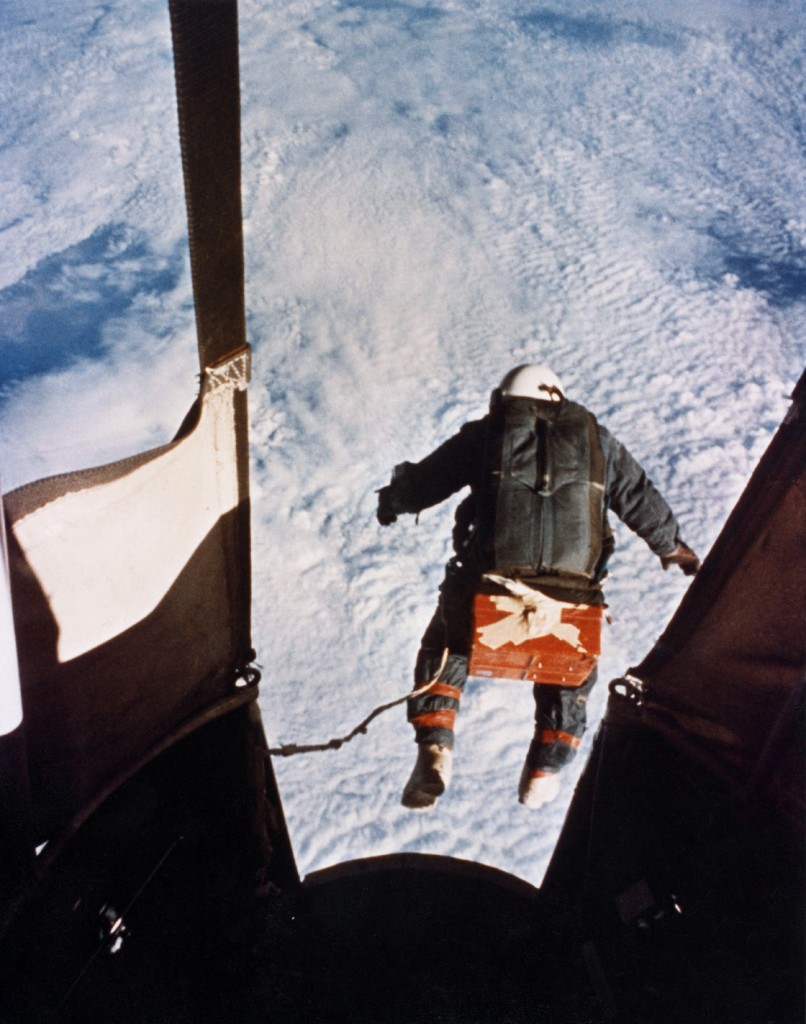 On August 16, 1960, Capt. Joseph Kittinger leapt from the gondola of a balloon 102,800 feet above the American southwest as part of the Air Force’s Project Excelsior. He fell for four minutes and 36 seconds, setting the record for highest balloon ascent, highest parachute jump, and fastest speed by a human being through the atmosphere. Here is a picture of the moment just after he took the critical step.
On August 16, 1960, Capt. Joseph Kittinger leapt from the gondola of a balloon 102,800 feet above the American southwest as part of the Air Force’s Project Excelsior. He fell for four minutes and 36 seconds, setting the record for highest balloon ascent, highest parachute jump, and fastest speed by a human being through the atmosphere. Here is a picture of the moment just after he took the critical step.
I like the spirit of this photo — not just the brave Indiana-Jones style leap of faith from on high, but also the fact that the guy appears to be doing it in a suit held together with electrical tape. Lowest bidder electrical tape.
This was the photo I’ve studied for inspiration on many a day in the last few weeks leading up to the blackwater pelagic dive I planned to do in Hawaii, in which you jump into 4-7,000 feet of water at night suspended by a 45 foot tether in shark and marlin-infested waters. As I mentioned, I wasn’t sure I’d be able to take the plunge when the time came.
Reader, I jumped in.
And when the moment came, it wasn’t even all that hard. But getting to the dive platform wasn’t so easy. Over the last few months my mind closed in on me at times with the horror of the idea: the abyss below, darkness around, and the the reality that the boat would essentially be trawling with the lines baited with divers. I had sometimes a hard time falling asleep thinking about this, laying awake and questioning whether I was out of my mind to do it. But I couldn’t shake the conviction that it was an experience I had to have. And, as my friend Dave pointed out, if it wasn’t really safe, they wouldn’t let you do it.
On the evening dives I did the day before the pelagic dive, I met Matthew D’Avella, one of the first to do the dive and the current pelagic dive leader with Jack’s Diving Locker, the outfit I used (A company called Big Island Divers also does this dive). He’s done the dive hundreds of times, and his advice for dealing with the dive was simple: Just don’t think about it. It was a strategy I used for most of the week, and I have to confirm it works. Right up until the last minute, that is . . . The fateful night came, and on the way to the dive shop, I began to have that feeling you get on the way to the dentist to have cavities drilled: a dread, but an overriding realization that you’ve got to do it and it’s best to get it over sooner rather than later. There were to be four paying customers that night: myself, two other women, and a man. Two or three divers with the shop would be joining us, including co-owner Jeff Leicher.
We headed into a classroom for a pre-dive briefing by Matthew. He explained the rope and tethering setup of the dive and the army surplus parachute they would deploy to slow the drift of the boat. He covered all the different organisms we might see, from the commonly encountered to the rare. “Odds are if you’re looking at it, it’s alive,” he said, although that isn’t always the case. Jeff once filmed a twizzler for 6 or 7 minutes, Matthew noted, before realizing his error. Hey, we all make mistakes.
He covered the risks and the things that might startle us: don’t be afraid of the chute when you see it out of the corner of your eye, he said, or the pull cord on your wetsuit wrapping around to touch you, or if you accidentally (I am not making this up) get whacked by a squid. Turns out the squid show up about 30 minutes into the dive as we are beginning to attract our own ecosystem, Matthew explained. Usually they hit the fish we are attracting and the scales come off like fireworks, he said. But sometimes they mistake a diver’s black wetsuit for empty water and jet right into them — chest, legs, or groin. Then they get all confused — like a bird hitting a window, one of my fellow divers suggested — and start inking everywhere and freeze for a few seconds while they’re sorting things out. If you can snap a photo of them in those few seconds, you can get them on film, Matthew said. If I could survive that experience without peeing in my wetsuit, I’d consider that a huge success. On that note . . .
The bad news, he said, was there were a lot of things out there looking for dinner and we are not at the top of the food chain. The good news was that we are not on the menu. Most of the time, sharks, swordfish, dolphins, et al. approach, decide it’s not a place they want to be, and move on, he said. Only once had a shark with a bad attitude approached. Matthew slugged it when it got too close to him (which is, I understand, proper protocol) but it was undeterred. At that point, he wisely ended the dive and no one was hurt. A shark had never opened its mouth near them on a pelagic magic dive. The main thing, he emphasized, was NOT to pee in your wetsuit. Divers already behave like wounded animals, he explained, and the scent of urine in the water does not help matters. As I have a bladder the size of a school girl (since I’m actually pretty much the size of a school girl) I made a mental note to hit the marine head with extreme prejudice pre-dive. I was gonna be ready for those squid.
Finally, if your mind starts spiraling downward for whatever reason, Matthew said, tell yourself, that was cool, great experience, but I’m getting out now. Don’t wait for a panic attack that could lead to a bad situation for everyone. Duly noted, I thought. I only once got to a place where my mind truly spiraled downward, and that was in radon-gas laced quarter-mile cave crawl in Wyoming. I told one of the trip leaders I needed to leave but was informed I couldn’t given where we were and that I had to keep going. I never panicked and calmly kept going without saying a word, but I knew exactly what he meant by the brain decay. I would watch for it.
Soon there was no more to be said and it was time to gear up and ride down to the Kailua-Kona pier. The van door closed with a clang worthy of prison transport. In my mind, it felt that way too, but I struggled to clear my mind and think of other things. I had earlier commented on the 3:1 ratio of women on the dive that night. That’s not unusual, Matthew said: Pelagic Magic is usually Ladies’ Night. I now asked why he thought that was. His feeling was that women have more refined underwater taste (my words. His: women are smarter) than men. Pelagic organisms are the thinking diver’s sea creatures, and women are more into the intellectual side of diving than the adrenaline/blood/guts side.
Whatever the case may be, we slowly made our way down Ali’i Drive past all the tourist bars where the revelers were living it up on a Thursday night. At the pier, I could hear a party across the inlet near the ‘Ahu’ena Heiau (Temple). Colored lights were flashing and music was playing. Suddenly I understood how a jumpsuit-clad guarded prisoner I once saw who’d been allowed to go fishing off a dock at a Kansas lake felt when I waterskied by and waved. I wasn’t about to chicken out now, though. On the boat ride there one of the women said she hadn’t want to tell anyone she was doing the dive until after she’d done it. Are you kidding? I said. I told everyone so I’d have to do it. (That includes you guys) : )
Jeff gave us the boat safety talk before we boarded the Nai’a Nui. I found Jeff’s calm presence reassuring. He and the guys had done this dive hundreds of times. And they all seemed surprised and impressed by the fact they said I was the first person to ever get scuba certified specifically to do this dive. They were very curious about it. How did I find out about the dive? How long ago? What attracted me to the dive? He told me they’ve been trying to publicize the dive so more people know about it, and he was glad to hear I was planning to do a blog post about it.
As we were leaving port I made sure to, as planned, heed nature’s call. It was a very short ride to the dive site, which is why Hawaii is a great place for this dive. Since it’s essentially a giant seamount, there is no continental shelf to contend with and it’s very easy to reach deep water. The Jack’s crew has dubbed their pelagic dive site Stardust/Area 96 — because that’s where the aliens are. On the way there I asked about the history of the dive. According to the legend, some guy at the dive shop had reportedly started going out at night *alone* in the mid-80s, jumping out of his boat untethered, and dropping down 50-100 feet. He was getting photographs no one else was getting. The Jack’s guys were skeptical about the untethered bit because it would be so easy to lose the boat. Matthew said on one recent dive, even with the parachute, the boat had drifted four and a half miles, and they had never felt a thing underwater. In any case, the staff at Jack’s, feeling a bit of ennui about diving routine, started doing something similar as a day dive several years back. They saw a few interesting things. But then they tried it at night and saw 10 times as many (since there is a nightly migration surface-ward of deep sea organisms to feed). After they realized that, they decided never to go back to days.
The boat came to rest and they tossed the parachute out. To my surprise we could still see the lights of Kona and the Big Island — and that was a great comfort. We donned our wetsuits. Matthew prepared to jump in first. The first person in has to check for sharks, etc. They generally perform this duty by turning like a washer on spin cycle. Jeff’s first-in routine is like a frogfish feeding, he said: “It’s one of nature’s fastest movements when I get in.”
Matthew urged us to be ready to jump in not long after he did (can’t imagine why), so after he performed the shark check, the moment had finally arrived. As I was first in line on the starboard side of the boat, I decided fortune favored the bold. I felt now, as I mentioned, remarkably little fear. The water was relatively calm, or as calm as can be expected for the North Pacific, and I overheard the crew remark on that and the fact it hadn’t been any rougher in port. A gentle breeze blew. Perhaps it was the fresh air and the lights of Kona that buoyed my spirits, but whatever it was, I felt calm but excited. I knew what I had to do and I knew I could do it. I stood up and shuffled to the dive platform and prepared to take the giant stride. Jeff reminded me to put my regulator in my mouth. Important safety tip. I thanked Jeff. I put my right hand on my regulator and mask and my left on my BCD (vest whose air volume I control to control my buoyancy) and I walked in with a splash. I did my buoyancy check to make sure I had the right amount of weight. Seemed perfect. I yelled that up to Jeff and he gave me the go-ahead to descend. Without hesitation, I let the air out of my BCD and slipped beneath the waves.
They had given me a dive light before I jumped in, and its beam was long and yellow. I had been the first one in after Matthew, and he was still at the surface. Down five feet, 10 feet, 15 feet, and still I was the only one below. I could see the white weighted lines the others would use. Here I was suspended above the abyss, and I wasn’t afraid at all. You can’t, of course, see the bottom 4-7,000 feet below. All you can see is a beautiful blue. It’s a calming color. 20 feet. 25 feet. I knew predators were very unlikely this early in the dive. I wasn’t afraid. 35 feet. 40 feet. I stopped just above the weight at the bottom of the line. I looked out into the open ocean away from the boat and marveled at the vast space. I thought, “This is so cool! I’m suspended in the middle of the Pacific Ocean with thousands of feet of water below me! Awesome!”
After about 5 minutes the others finally joined me. Both women — Nancy and and astronomer named Laura — had agreed to look out for me and be a dive buddy should I get into any trouble or need anything. That helped bring peace of mind. And once they and the other paying customer, Matthew, and Jeff were all in the water, it felt like a totally safe environment. I was hooked to a line. I could see the boat above. There were at least six other people a few dozen feet away from me and we all had lights.
At first I couldn’t see anything in the water. Or rather, I was expecting to see big stuff — ctenophores 8″ long like at the aquarium, or a 5 foot chain of salps. But you have to look with different eyes. When Howard Carter first made a hole in the plastered over door to Tutankhamun’s tomb and stuck a candle in to see what lay inside, the escaping hot air and the dimness prevented him from seeing anything for a short while. After a few moments, his patron Lord Carnarvon asked anxiously, “Can you see anything?” And Carter replied, “Yes, wonderful things.” Once I adjusted my eyes, so did I.
Many of the pelagic inverts are only an inch or so long and nearly transparent. Once I started looking for small, nearly invisible things, I spotted my first life of the evening: a siphonophore, or colonial cnidarian in a group separate from the jellyfish. The second picture here is the closest I can find to what it looked like. There was a small jade-colored bag or disc at the front, followed by a long strand trailing dozens of gossamer filaments that lay motionless in the water. It was no more than 5 to 7 inches long. It had always been my impression that most of the pelagic fauna were passive floaters. But I learned I was wrong on that count many times over. After a few seconds with my light pointed at it, the siphonophore’s head decided it didn’t really care for the spot light. The filaments suddenly retracted to the main line and the head started to pulsate and pull the colony away from me. COOL. I saw a few other similar siphonophores on the dive and they all behaved the same.
Many big things (fish, jellies, coral, etc) have little larval stages, and these often drift in the open ocean. There were many teeny fish and other things that swam up to my light during the dive that I couldn’t really identify other than to say they were larvae of some sort. Among the teeny tiny stuff I did see one thing I recognized: a copepod! Those long horns and its overall body shape gave it away. I had a brief flash of recognition and it was gone.
The next “big” thing I saw was the most amazing crystalline spider-like object. It was about 2-3 inches long and almost flat — about the size of a silver dollar or a little bigger. It looked like a transparent spider that had been pressed flat, and as it tumbled slowly in the current it twinkled with a rainbowy iridescence, as if it were made of glazed glass. I knew from arachnology that there are such things as sea spiders, but after the dive Matthew identified this creature as a larval lobster. Here’s a picture of a larval lobster that does look similar to what I saw. I saw at least one more that night.
Then I didn’t see anything nearby for a while, so I started looking at what people were looking at nearby. One of the cameramen (Jeff or Matthew, not sure which) beckoned me over as he was filming a comb jelly(see the comb jellies here). Just as I looked at it it sucked in a pale orange zooplankton, which remained perfectly visible in the ctenophore’s stomach. Wow! And once again, it startled me with its ability to move. I thought from watching them in aquariums that comb jellies pretty much just sit there, capable of moving only by beating their tiny cilia on the combs. But this comb jelly decided it didn’t like light any more than the siphonophore — and promptly jetted off by contracting its lobes like a jellyfish.
Things start to get all blurred in my brain at this point, but at some point soon thereafter I noticed a tiny orangey-pink thing that momentarily flashed out eight tiny legs and looked like a crab, but instantly retracted back to an orange pea-sized object that swam away from me as fast as it could, chase it though I may. I learned from Matthew after the dive that this was in fact a swimmer crab. It flashes it’s legs out in a threat display when startled and then swims off, he said. It has no idea, he said, how big it is compared to you.
In the water there were also many tiny bells less than a centimeter long and not pulsing — possibly larval jellyfish. At one point, I definitely remember seeing a conventional jelly fish with long stinging tentacles pulse by, but the bell was only 1-2 in. in diameter and the tentacles 2-3 times that. It looked like the photo labeled “Hydro” here (I have to link to Matthew’s photos from previous dives since I had no camera worthy of the task myself). At another point, I’m pretty sure I saw a box jellyfish like the one labeled “Box Jelly Side” here. Box jellies are a subset of the true jellyfish in the phylum Cnidaria. If you know anything about box jellies, you know that’s a potentially very scary thing as a few species are among the most venemous animals on earth, though Matthew had told us these box jellies are not nearly as dangerous as their famous kin. But still, keep your distance, he warned. I definitely made sure to get out of the way as it pulsed by.
Late in the dive I saws a salp — one on its own and possibly two linked together. They are commonly colonial, but they also grow to be fairly big in their own right — 5-7 cm long in this case. They looked like the ones in the lower right hand photo here and they pulsated with a strong steady rhythm. Salps are floating tunicates, which means they are distantly related to us as the larval form of tunicates . . . wait for it . . . has a spinal cord! Hence they are chordates just like us.
I also saw the squid flash by in a big school toward the end of the dive just out of the circle of our lights. They never came close, but their numbers and speed were amazing. Although some of the things we looked at are rumored to bioluminesce, there was no way to tell with all the lights in the water. If I were to suggest a way to really take the dive intensity up a notch, I’d suggest having everyone turn out their dive lights for a minute toward the beginning of the dive to see if anything glows. Course, that wouldn’t be scary. Not at all.
One of the last things I saw — and I saw more than one — I am still not certain of what it was nor do I have a picture to show you. It was shaped and sized like a peanut, or a little bigger. The inside was stippled with opaque dots, and the outside had a solid milky colored coating about a quarter inch thick — like a bacterial capsid writ large. Matthew suggested it was some sort of radiolarian or its egg mass or some combination thereof, but I haven’t been able to get any further figuring out what it was since I got back. If you think you know what the alien peanut pelagic creature was, write it on the back of a $20 bill and send it to Jennifer Frazer, P.O. Box 3000, Boulder CO, 80307. : ) Or even better, stick it in the comments below.
New! Now with picture of alien pelagic peanut creature (with shrimp hitchhiker):
As cool as all this was, air was beginning to run low. The women had left the water 5 -10 minutes ago and there were only two divers beside myself left. Matthew hadn’t given us a specific time to be out, but he had warned, “Don’t be the last out of the water.” Plus, I was starting to get a little queasy. My scopalamine patch had worked great the previous day in preventing seasickness, but I hadn’t gotten my new patch on until three hours before the new dive (eight hours is recommended). Since I was such a new diver and hesitant to trust my own buoyancy control in open ocean without reference points, I had clung to the line. But the line moved up and down with the boat, and that was starting to take its toll. I did my 3 minute safety stop and surfaced, but as I climbed aboard the boat I felt terribly seasick. I slowly pulled off all my gear and joined the women up front in the fresh breeze. Matthew offered me a cookie but I didn’t think that was a good idea.
I listened to Matthew, who had greatly enjoyed the dive (It never gets old, he said) and who had spent some time watching a rare heteropod (see photos labeled heteropod here), a type of mollusk that has lost its shell and uses its foot to swim like a fin and its teeth to take large bites out of jellyfish and other floating pelagic creatures. It was fascinating, he said. Sadly, I missed it. But I now understand why the dive never gets old and why my dive master they day before had done the dive two dozen times — it’s addictive. It’s like a box of cracker jacks: there’s a prize inside and you never know what you’re going to get. Cookiecutter sharks, bizarre larvae of ocean fish, pelagic seahorses, sea butterflies, sea angels, paper nautiluses, venus’s girdles — who knows! Could be anything, and it could be something no one has ever seen before but YOU. That is, you don’t have to be an astronaut or even an oceanographer to explore a new frontier. You can take that giant leap for mankind right here on Earth in the waters off Hawaii. Who among us here, given the capability to dive, could resist that? And now that I’ve done it, I feel like a little kid after their much-feared but exhilarating first trip on a scary ride: “Again!”

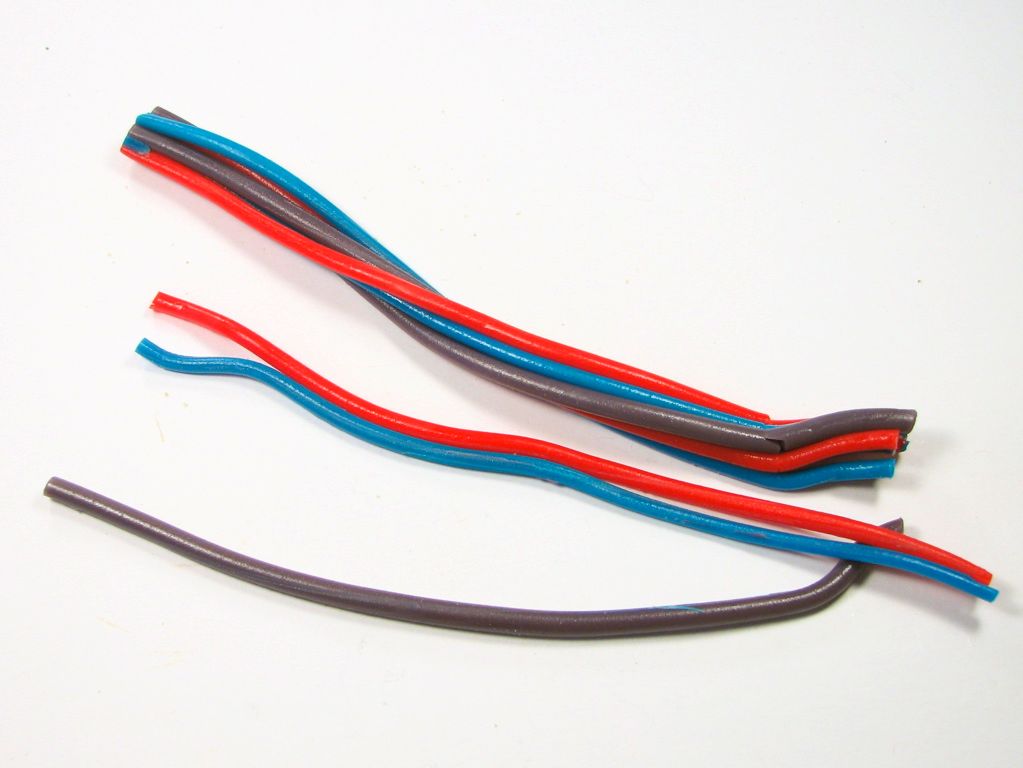
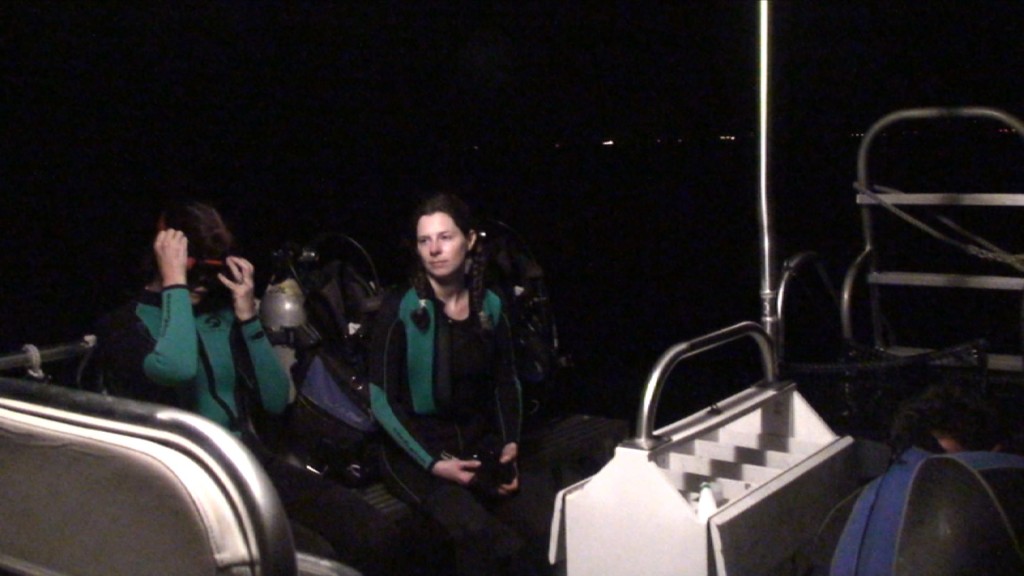
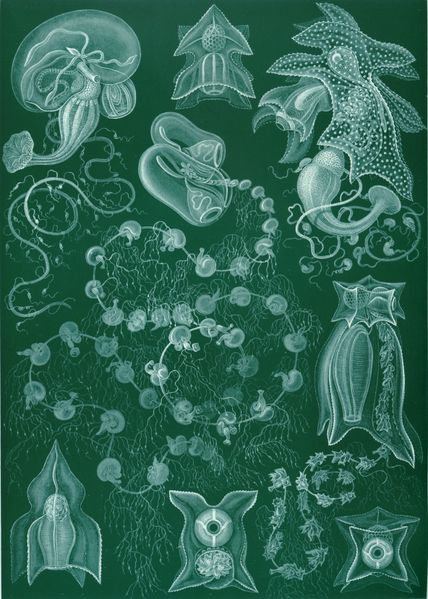

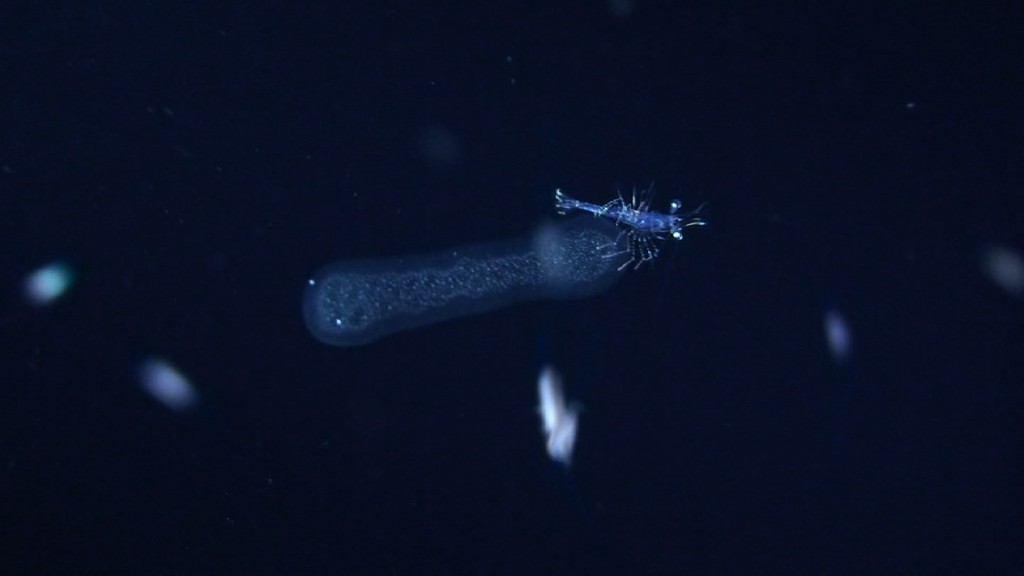
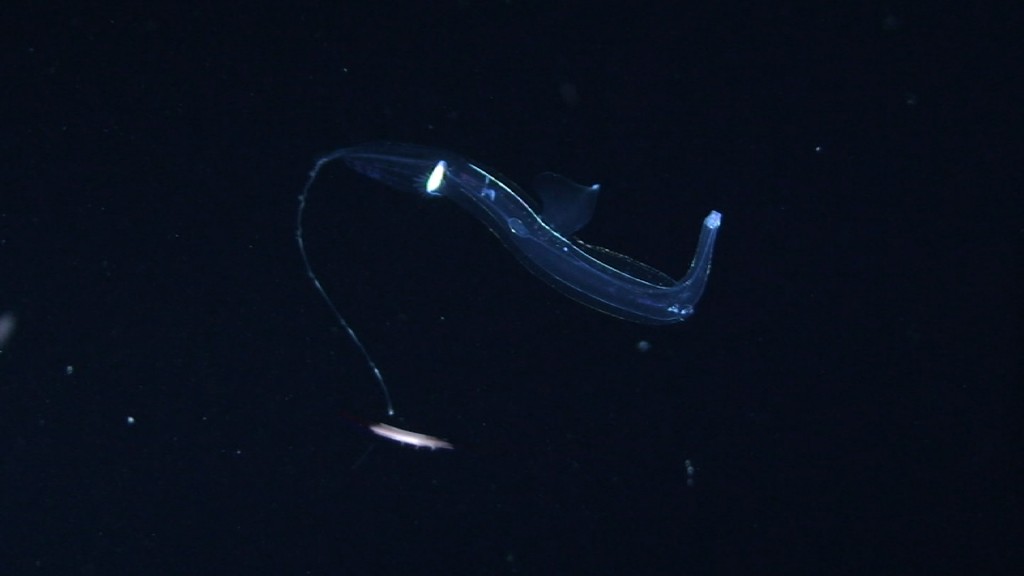

{ 4 trackbacks }
{ 9 comments… read them below or add one }
well done. :)
Thanks! : )
Wow!
I would totally do that dive! I’ve only done a couple of night dives, one from a boat near an island, two others off the coast… and the coolest things I saw were cuttlefish (which are rather iridescent in the light of the flashlights and come play with you! :) ).
If I ever manage to make it to Hawaii I’ll have to remember to check these people out! :)
Playing with cuttlefish = awesome.
Great dive report! I’ll put this on my to do list if I ever get to Hawaii. I am surprised that it is possible to see cookie cutter sharks. I have seen what they can do to whales and submarine telecommunications cables. I hope they are more hesitant to taste testing divers!
Yeah, I read about the cookie cutters and what they do too before I went. Though I think the local boys would have been excited to see one, that was definitely one deep sea organism I wasn’t too keen to see. Though if I ever need to make underwater biscuits, I know exactly which ocean creature to ask for help . . .
WOW!!! Great dive story. You really have a gift with describing both the emotion an intensity of the dive along with the amazing creatures there. Wow. Makes me want to go.
Jennifer–what an amazing experience and description! Way to go!!! And thanks for sharing with us.
I’ll add another WOW! to the list! What a wonderful experience! Thanks for sharing your experience with us!